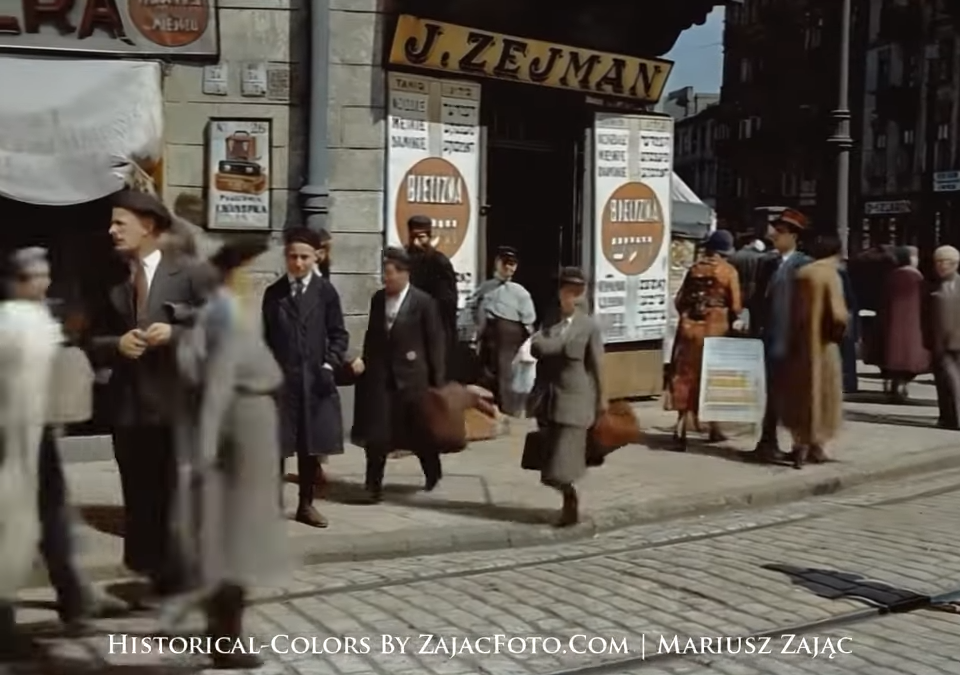A Polish photographer has used historical photographs and artificial intelligence to create a film that recreates Warsaw during the first half of the 20th century before the city was almost completely destroyed in the Second World War.
While his work has won praise for innovatively bringing to life the city’s past, some have also criticised it for mixing photographs from completely different times, including wartime images from the Jewish ghetto.
The film was produced by Mariusz Zając, a photographer and IT specialist who runs a popular Facebook page called Historical Colors, on which he shares colourised photographs and videos from Polish history.
Zając claims that his latest work is the first of its kind, using artificial intelligence to not only colourise archival images of Warsaw from 1910 to 1945 but also to turn them into a film.
The movie, almost two minutes long, is also accompanied by AI-generated music. It has already been viewed over one million times on Facebook.
Sorry to interrupt your reading. The article continues below.

Notes from Poland is run by a small editorial team and published by an independent, non-profit foundation that is funded through donations from our readers. We cannot do what we do without your support.
It shows scenes from the streets of Warsaw, including a prominent role for the city’s former Jewish population. Before the Second World War, Warsaw was home to over 350,000 Jews, who made up around a third of its population. The only city in the world with a larger Jewish population at the time was New York.
However, Warsaw’s – and Poland’s – Jews were almost entirely wiped out during the Holocaust. In Zając’s film, it is clear that some images of Jews come from the time of the German-Nazi occupation, as they are wearing Star-of-David armbands and a tram is marked with a Star of David.
One comment under the film criticises the fact it is titled “Warsaw Dream” and plays lively music while showing images from the wartime ghetto.
In response, Zając said that the work is “not a historical document maintaining consistency of time and events”. He argued that the title is fitting because “in dreams everything gets mixed up, real memories and unreal situations”.

A still from the film showing people with Star-of-David armbands, which Jews were forced to wear during the Nazi-German occupation
Some other negative comments expressed concern that such techniques could be used to trick viewers into thinking they were viewing genuine historical footage.
Jerzy S. Majewski, a historian of Warsaw, told the Gazeta Wyborcza newspaper that the film is “a falsification of history” that mixes different time periods together.
However, almost all of the 17,000 “reactions” the film has received on Facebook have been positive and many comments praise Zając’s work.
Speaking to Gazeta Wyborcza, Zając said that he is now working on a new film that will use images from the Warsaw Uprising to create an effect like flying a drone over the city during the uprising.
Today marks the 77th anniversary of the beginning of the Warsaw Uprising.
Memory of the struggle has been strongly influenced by the work of Sylwester Braun, a member of Poland's underground resistance who photographed the dramatic and tragic eventshttps://t.co/OprNr0Y0vX
— Notes from Poland 🇵🇱 (@notesfrompoland) August 1, 2021

Daniel Tilles is editor-in-chief of Notes from Poland. He has written on Polish affairs for a wide range of publications, including Foreign Policy, POLITICO Europe, EUobserver and Dziennik Gazeta Prawna.



















